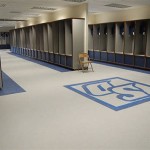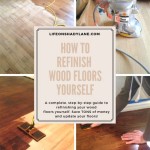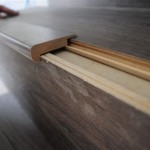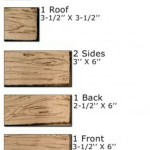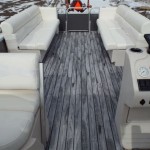How to Install Hardwood Floors on Concrete
Installing hardwood floors over concrete presents a unique set of challenges compared to installing them over a wood subfloor. Concrete, a porous material, can retain moisture, which can be detrimental to hardwood, causing warping, cupping, and eventual decay. Therefore, careful preparation and the right installation methods are crucial for a successful and long-lasting hardwood floor over concrete. This article details the necessary steps, considerations, and techniques involved in achieving a professional-looking and durable hardwood floor installation on a concrete substrate.
Before even considering the aesthetic appeal of a new hardwood floor, assessing the concrete slab's condition is paramount. This assessment involves checking for any existing damage, such as cracks, unevenness, and signs of moisture. Addressing these issues before installation is essential to prevent future problems. A level surface provides a stable base for the hardwood, while moisture control prevents wood damage. Ignoring these initial steps can lead to costly repairs or even a complete floor replacement down the line.
Preparing the Concrete Subfloor
The initial step in preparing the concrete subfloor is a thorough cleaning. Use a broom and vacuum to remove any loose debris, dust, and dirt. Following this, any stains, oil, or paint residue should be cleaned using appropriate cleaning solutions. For stubborn stains, a concrete degreaser might be necessary. Allowing the cleaned surface to dry completely is essential before proceeding to the next steps.
Next, inspect the concrete slab for cracks and imperfections. Smaller hairline cracks might be acceptable if they are stable and non-structural. However, larger cracks should be repaired using a concrete crack filler or epoxy patching compound. Follow the manufacturer's instructions for application and curing times. For significant structural damage, consulting a structural engineer is recommended to determine the appropriate repair strategy. Uneven surfaces can be leveled using a self-leveling concrete compound. These compounds are designed to flow and create a smooth, even surface for flooring installation.
Moisture testing is arguably the most critical step. Concrete, being porous, can wick up moisture from the ground, which can damage the hardwood flooring. Several methods exist for testing moisture levels: the calcium chloride test (anhydrous calcium chloride test), the relative humidity test (RH test), and the electronic moisture meter. The calcium chloride test involves placing a measured amount of calcium chloride under a sealed dome on the concrete surface for a specified period (usually 72 hours). The weight gain of the calcium chloride indicates the moisture emission rate. The RH test involves drilling small holes in the concrete and inserting a probe connected to a hygrometer to measure the relative humidity within the slab. Electronic moisture meters provide an instant reading of the moisture content but are often less accurate than the other methods. The acceptable moisture level will vary depending on the type of hardwood flooring being installed and the manufacturer's recommendations. If moisture levels are above the acceptable range, a moisture barrier must be installed.
Choosing the Right Installation Method and Materials
Several methods can be employed to install hardwood floors over concrete, each with its own advantages and disadvantages. The direct glue-down method, the floating floor method, and the sleeper system are the most common approaches.
The direct glue-down method involves adhering the hardwood planks directly to the concrete subfloor using a specialized adhesive. This method provides a stable and solid feel underfoot. However, it requires a very level and smooth concrete surface. It is also more permanent, making removal more difficult. Only engineered hardwood is recommended for glue-down installations. Solid hardwood is generally not recommended due to its greater susceptibility to expansion and contraction caused by moisture fluctuations, even with a membrane.
The floating floor method involves installing a moisture barrier followed by an underlayment and then the hardwood flooring. The hardwood planks are typically clicked or locked together, creating a single floating surface that is "unattached" to the concrete. This method is often easier and faster to install than the glue-down method and can be used with both engineered and some solid hardwood floors, although engineered is still preferred. It also provides a degree of cushioning and can help to reduce noise transmission. The underlayment provides a moisture barrier, sound insulation, and a smoother surface for the flooring. Selecting an underlayment with a built-in vapor barrier is crucial if the concrete slab has moderate moisture levels. This method is generally more forgiving of minor imperfections in the concrete surface than the glue-down method.
The sleeper system involves installing wood sleepers (usually 2x4s) onto the concrete subfloor, creating a framework to which the hardwood flooring is then nailed or screwed. This creates an air gap between the concrete and the hardwood, which helps to mitigate moisture issues. This method is more labor-intensive and requires more materials. It also raises the floor height, which may be a concern in some situations. However, it provides a very stable and solid feel underfoot and is suitable for both engineered and solid hardwood floors. When using a sleeper system, ensuring proper ventilation beneath the flooring is vital to prevent moisture build-up and mold growth.
Regardless of the chosen installation method, selecting the appropriate type of hardwood flooring is critical. Engineered hardwood is generally preferred for concrete subfloors due to its stability and resistance to moisture. Engineered hardwood consists of multiple layers of wood veneer bonded together, making it less susceptible to warping and cupping than solid hardwood. Solid hardwood can be used in some cases, particularly with the sleeper system or when moisture levels are consistently low, but careful consideration and proper acclimation are essential. The thickness of the hardwood flooring also plays a role. Thicker planks tend to be more stable and durable but can also be more expensive. In addition to the hardwood itself, selecting the right adhesive (for glue-down installations), moisture barrier, and underlayment is crucial for a successful installation. Consult with flooring professionals or product manufacturers to ensure compatibility and optimal performance.
The Installation Process
Once the concrete subfloor is prepared, choosing the correct installation method is key, and the corresponding materials are selected, the actual installation process can begin. Regardless of the method, acclimating the hardwood flooring to the environment is crucial. This involves storing the flooring in the room where it will be installed for several days (usually 3-5 days) to allow it to adjust to the temperature and humidity levels. This will minimize expansion and contraction after installation.
If using the glue-down method, apply the adhesive according to the manufacturer's instructions, ensuring even coverage. Work in small sections to prevent the adhesive from drying out. Carefully position the hardwood planks and press them firmly into the adhesive. Use a rubber mallet to tap the planks into place, ensuring a tight fit. Leave expansion gaps around the perimeter of the room to allow for natural movement of the wood. The expansion gap width will depend on the type of wood being used, so checking the manufacturer's instructions on this is vital. For the floating floor method, install the moisture barrier and underlayment according to the manufacturer's instructions. Then, begin laying the hardwood planks, locking them together according to the manufacturer's instructions. Again, leave expansion gaps around the perimeter of the room.
For the sleeper system, install the sleepers onto the concrete subfloor, ensuring they are level and evenly spaced. Use concrete fasteners to secure the sleepers to the concrete. Then, install the hardwood flooring onto the sleepers using nails or screws. Ensure that the fasteners are long enough to penetrate the sleepers adequately but not so long that they protrude through the bottom. Leave expansion gaps around the perimeter of the room.
Throughout the installation process, regularly check for levelness and alignment. Use a level to ensure that the flooring is even and a straight edge to ensure that the planks are aligned correctly. Make any necessary adjustments as you go. Once the flooring is installed, install baseboards and trim to cover the expansion gaps and provide a finished look. These should be attached to the wall, ceiling or baseboard and never to the floor as this will restrict the necessary expansion gap. When installing the baseboard, leave a very small gap between the top of the flooring and the bottom of the baseboard to allow for future expansion.
Finally, inspect the finished floor for any imperfections or gaps. Touch up any areas as needed and clean the floor thoroughly. Follow the manufacturer's recommendations for cleaning and maintaining the hardwood floor to ensure its longevity and beauty.

Installing Wood Flooring Over Concrete Diy

Installing Hardwood Floors On Concrete Subfloors

Installing Engineered Hardwood On Concrete Twenty Oak

Ask Fred How Do I Install Wood Floor Below Grade Schedule

How Do I Install A Hardwood Floor On Concrete Slab The Carpet Guys

Installing A Hardwood Floor Over Concrete Slab American Information Center

Installing Engineered Hardwood On Concrete Twenty Oak

How To Install Hardwood Flooring For Beginners

Installing Engineered Hardwood On Concrete Villagio Guide

Q A Solid Wood Floors Over Concrete Slabs Jlc
Related Posts

